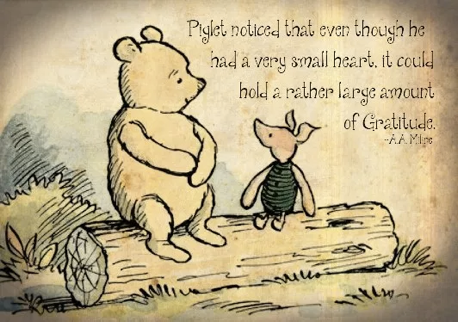Global Gratitude: Lessons for Thanksgiving

Ever noticed how a heartfelt “thank you” can completely change your day? Not the automatic kind—like when someone holds the door—but the genuine, deeply felt gratitude that makes you feel truly appreciated.
With Thanksgiving front and center in the U.S. this week, it’s the perfect time to reflect on how we express gratitude and how it strengthens our connections.
Gratitude Around the World: What We Can Learn
Gratitude isn’t a one-size-fits-all deal. It looks different across cultures, offering us fresh perspectives on how to make it more meaningful in our own lives.
Here are a few fascinating examples:
- In India, saying “thank you” to close family or friends can feel too formal. Gratitude is often shown through actions—like cooking a meal or lending a hand. A verbal “thank you” is reserved for moments of deep significance, often paired with gestures like hands at the heart in a namaste position.
- In Thailand, the “wai” gesture—a slight bow with palms together—expresses gratitude, respect, and humility. It’s a silent but powerful way of saying thanks.
- In Japan, Labor Thanksgiving Day (Kinrō Kansha no Hi) on November 23rd honors hard work and community contributions. Families write thank-you notes, and the day serves as a collective reflection on gratitude.
- In Nordic countries, gratitude is quieter, often tied to concepts like hygge (coziness) or lagom (balance). It’s about appreciating life’s simple pleasures, like a warm drink or a peaceful evening.
- In Southern Africa, receiving a gift often involves holding out both hands, symbolizing the care and value placed on what’s given.
One of my most moving experiences with gratitude came while working on a microfinance project in Kenya. Every morning, the women we collaborated with welcomed us with joyful songs and clapping. It was their way of expressing thanks—a reminder that gratitude transcends words.
“Opening your eyes to more of the world around you can deeply enhance your gratitude practice.”
—Derrick Carpenter, positive psychology coach at Happify
Gratitude Languages: Are You Speaking the Right One?
This beautiful diversity in gratitude reminds me of one of my favourite books, The Five Love Languages by Dr. Gary Chapman. In it Chapman famously shared that we all give and receive love differently—through words, actions, gifts, quality time, or touch. His insight? If you’re not speaking someone’s “language,” they might not feel the love, even if your intentions are good.
This book was a GAMECHANGER for me. I read it for the first time on a flight on Fijian airways across the Pacific about 15 years ago now and mid-flight got into a lengthy conversation with a flight attendant who told me that the book had saved his marriage. In the years since I can say that adapting my languages to who I’m trying to show appreciation for has profoundly changed the most important relationships in my life for the better.
Gratitude works the same way. Some people feel appreciated when you say a heartfelt “thank you.” Others light up when you show it by helping them out. And for some, it’s all about spending quality time or giving a thoughtful gift. The key is knowing how they’ll best receive your gratitude.
Chapman has extended his concept to professional relationships in The 5 Languages of Appreciation in the Workplace. It highlights that gratitude at work isn’t one-size-fits-all either. Some people light up at a heartfelt thank you, while others feel most appreciated when you roll up your sleeves and help them out. I’ve written more about this topic here.

Your Gratitude Challenge for Thanksgiving Week
This Thanksgiving, let’s put this into action:
- Think of someone who’s made a difference for you recently—a friend, family member, or colleague.
- Match your gratitude to their “language.” Is it a thoughtful thank-you note, lending a helping hand, or sharing some quality time?
Gratitude isn’t just a practice—it’s a mindset. By making it intentional and meaningful, you can strengthen your connections and make someone’s day a little brighter.
Loved this article? Then you’ll love Love Mondays.
Join the Love Mondays community and receive a short and sweet leadership lesson and mini activation challenge in your inbox each week – the Monday morning kick in the pants you’ve been looking for!
